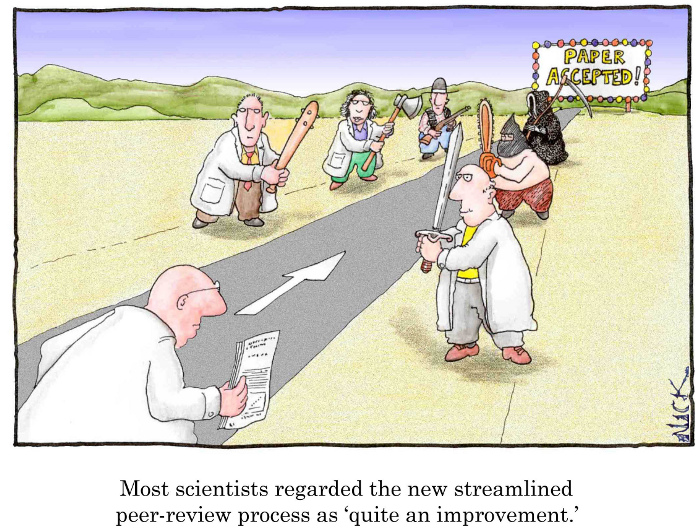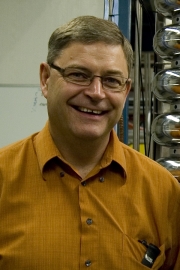Director's Corner
28 May 2009
What's in a word?
Today's issue features a Director's Corner from Nick Walker, Project Manager for the Global Design Effort.
During the day-to-day activities of Global Design Effort Project Management, I find myself using certain nouns more frequently than others. Recently, the word review has featured prominently in our vocabulary.
The online Compact Oxford English Dictionary reports two applicable meanings for 'review': 1. a formal assessment of something with the intention of instituting change if necessary; 2. a retrospective survey or report. While these definitions adequately describe the process, they hardly seem to do justice to what the GDE activities have been through in the last six weeks. It started in Tsukuba, Japan, at TILC09 in April, when our R&D activities were put under the microscope for over three days by the Accelerator Advisory Panel (AAP). The AAP left no stone unturned during the lengthy preparations and the review itself, and touched on a broad spectrum of detail from specific technical parameters to high-level questions of project management and overall strategy. Unlike most review committees, the AAP is an ever constant presence in the lives of the Project Managers. We have worked closely together with Eckhard Elsen and Bill Willis (the AAP chairs) to refine the agenda, content and scope of the review, in an effort to achieve the maximum useful return. As such, the TILC09 review became a major milestone in our planning, and has certainly enabled us to focus and refine the intermediate goals and plans for the next months, while identifying critical issues that face us in our broader goals for the Technical Design Report in 2012. A copy of the AAP's report can be found here, and a more detailed article will appear in this column in the near future.
 The GDE has gone through a series of reviews recently — here the peer review process as seen by scientist and cartoonist Nick D. Kim (Cartoon by Nick D Kim, lab-initio.com). The GDE has gone through a series of reviews recently — here the peer review process as seen by scientist and cartoonist Nick D. Kim (Cartoon by Nick D Kim, lab-initio.com). |
But the AAP was only the start: no sooner had we returned from Tsukuba when we had to turn our attention to the Project Advisory Committee (PAC) review three weeks later in Vancouver. Unlike the AAP review, PAC is an external review body which reports to the ILC Steering Committee (ILCSC), and oversees both the accelerator and the detector programmes. The level of detail of the PAC review was much lower than the AAP and mostly at the 'management' level. Fortunately all the work put in for the AAP review put us in good stead for the PAC review. The initial close-out was very positive, and we expect the formal draft report soon.
Both of these reviews were 'GDE centric' in the sense that they viewed the worldwide ILC activities through our Technical Design Phase R&D Plan and the GDE Project Management. As such both are truly international reviews. But the AAP and PAC reviews are not the only ones we have faced in the last weeks. After the PAC review, the US Department of Energy held at SLAC its own formal review of the Americas Regional Team (ART) programme. Similar reviews by funding agencies occur in the other regions. These 'institution- and regionally-centric' reviews by the funding agencies are a good reminder of the two-dimensional nature of the GDE organisation. While the Project Managers were essentially responsible for orchestrating the GDE-centric reviews, it was the Americas Regional Director Mike Harrison who was on the line for the DOE ART review.
As anybody who has been involved in such reviews will tell you, the greatest benefit to those being reviewed is in the preparation itself. Being reviewed forces management to focus and take stock of where we are and where we are going. For the GDE, reviews play the second important role of providing additional credibility and accountability as an international collaboration, which cannot be achieved by the regional-centric reviews by the funding agencies. Despite the amount of work involved (both by reviewers and reviewees), these things are clearly of great benefit.
Now that the review 'season' is over, we turn our attention once more to the real work. The comments and recommendations from the reviews – particularly the AAP – will help us move forward with our goals. A particular focus of the AAP comment brings to mind another word which we have used extensively recently: integration. Technically speaking, integration is the term we apply to the design of the collider as a whole – its layout, parameters etc. – as distinguished from the on-going critical risk-mitigating R&D which is our current focus. As this article goes online, the Technical Design Phase 'team' will be meeting face-to-face at DESY to discuss a modified baseline design for the ILC for the Technical Design Phase 2 costing activities. This is an important meeting, not least because it marks a shift back to the linear collider design, which has necessarily taken a back seat during the last twelve months. The time is now correct to focus attention on this aspect of our work, as we prepare for TDP-2 and the production of the Technical Design Report. For the project management, integration has another important meaning: the concept of integrating the international 'design team' into a single functioning group.
Despite their acceptance and common usage, not all words that enter our vocabulary are good ones. One such word is minimum, as in 'minimum machine'. This unfortunate use of word has caused confusion and some consternation in attempts to translate it. We intend to make every effort to remove this word from our vocabulary in the future.
-- Nick Walker
